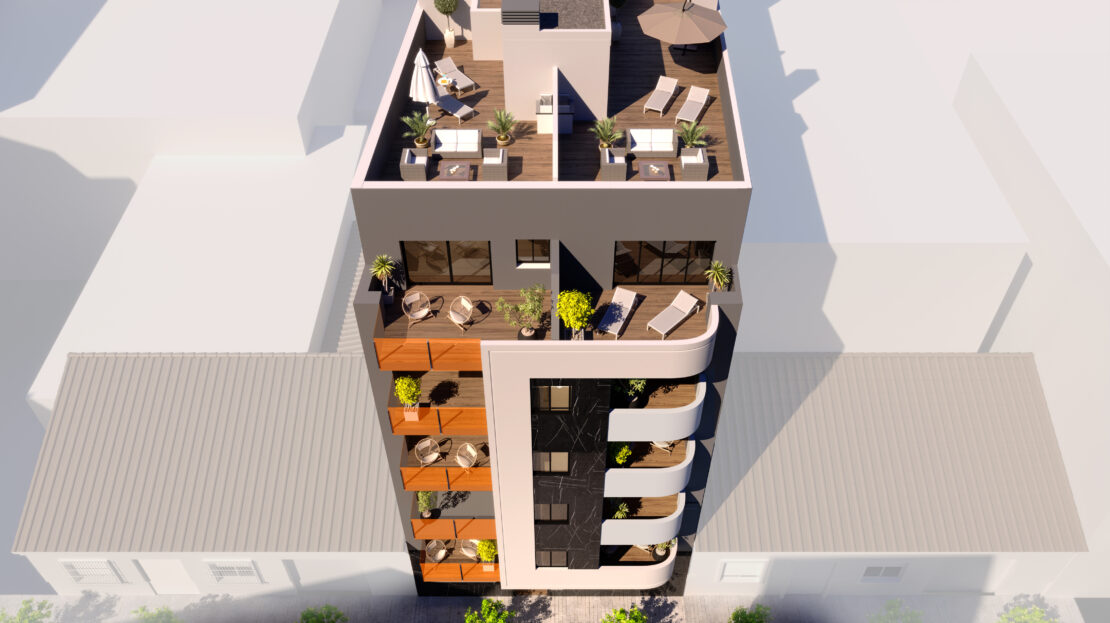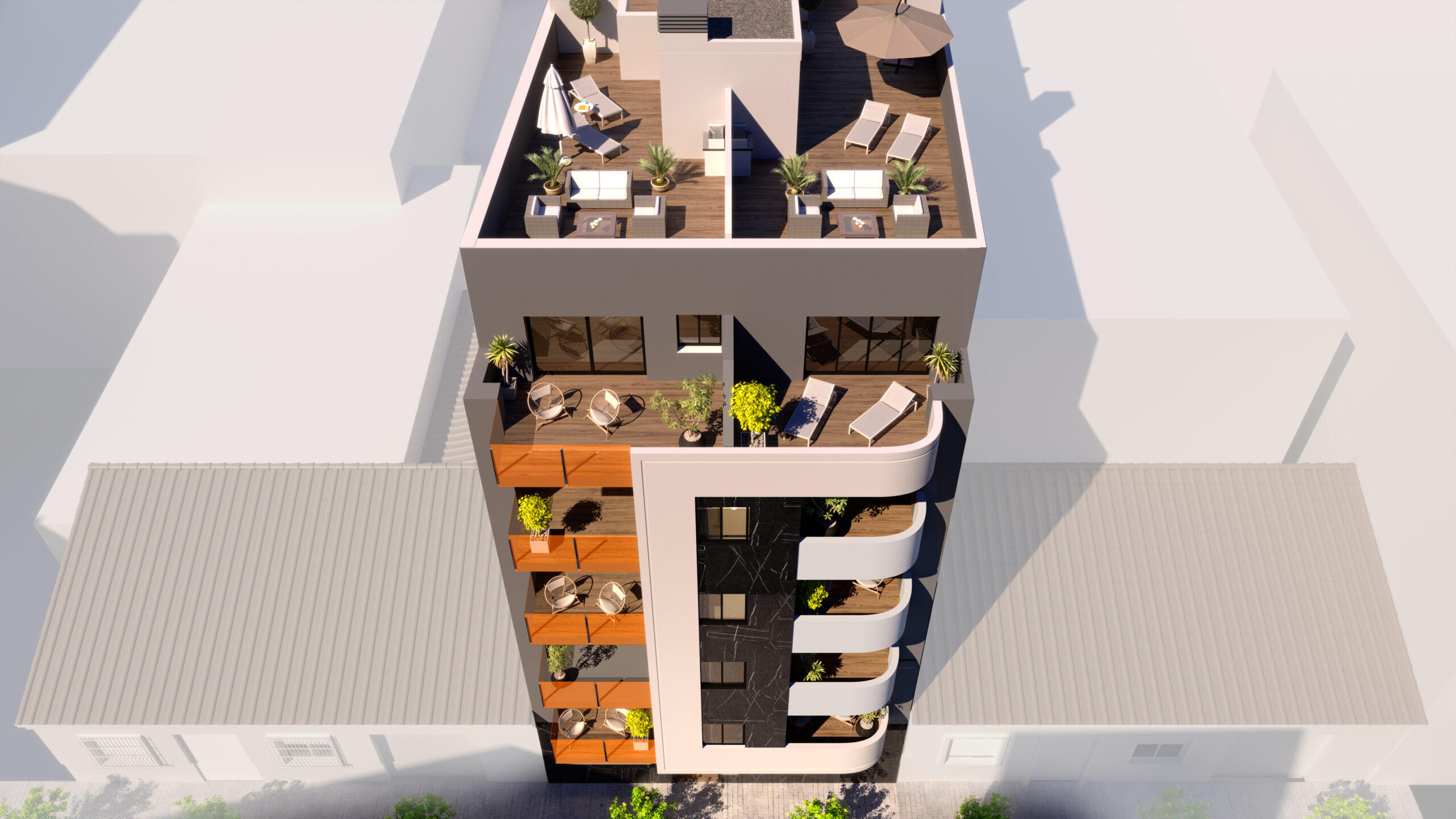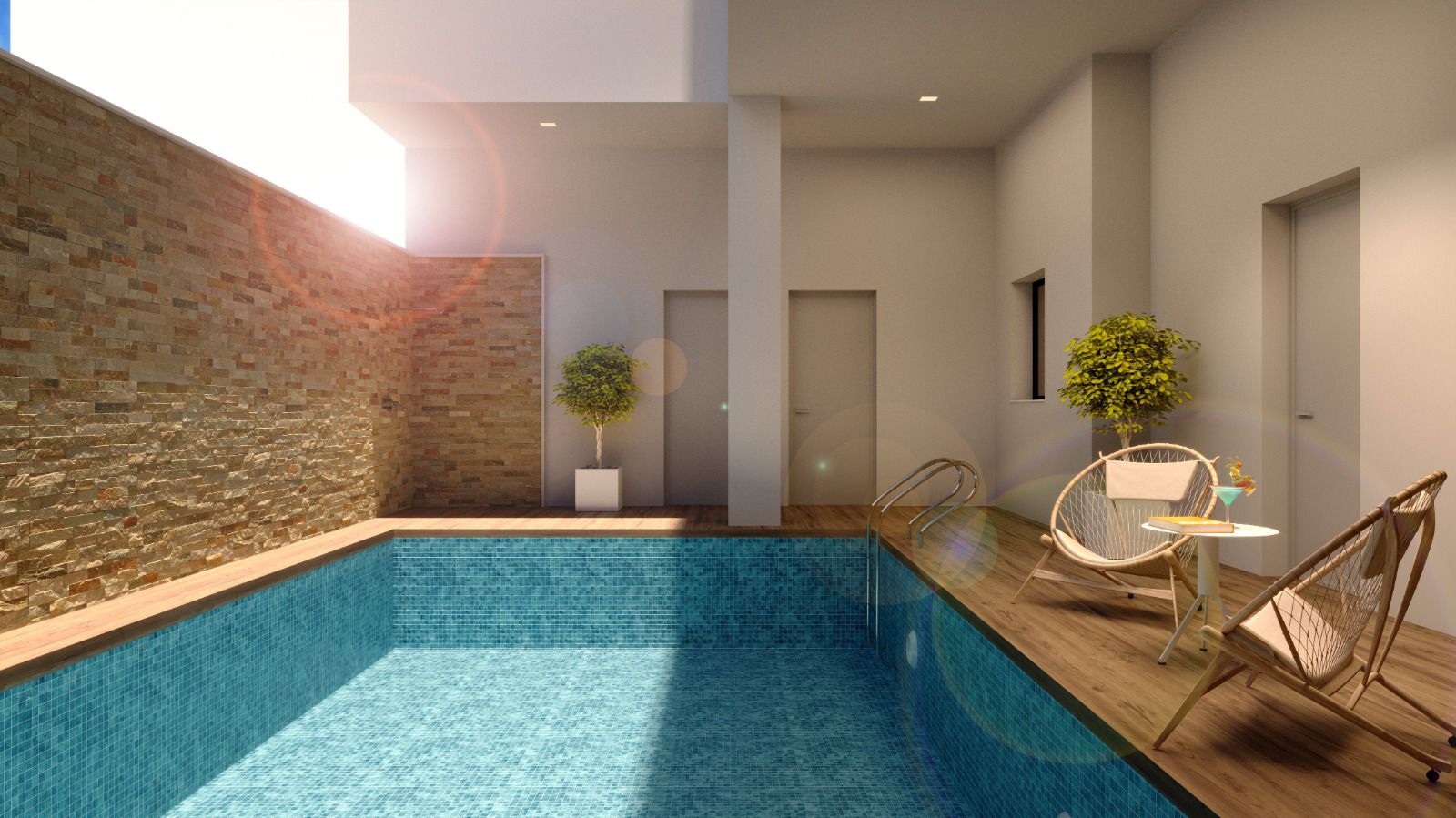Overview
- 2 Bedrooms
- 2 Bathrooms
- 100.26 m2
Property Description
ONLY A TWO MINUTE WALK FROM THE PROMENADE, THIS MODERN NEW HOME COMBINES STYLE AND A GREAT POSITION IN THE HEART OF TORREVIEJA
THE LOCATION
![]() Playa del Cura Promenade – 2 min walk
Playa del Cura Promenade – 2 min walk![]() Plaza de la Constitution – 5 min drive
Plaza de la Constitution – 5 min drive![]() Torrevieja Marina – 5 min
Torrevieja Marina – 5 min![]() La Zenia Shopping Boulevard – 21 min
La Zenia Shopping Boulevard – 21 min ![]() La Marquesa Golf Resort – 27 min
La Marquesa Golf Resort – 27 min![]() La Finca Golf Resort – 28 min
La Finca Golf Resort – 28 min![]() Las Colinas Golf & Country Club – 33 min
Las Colinas Golf & Country Club – 33 min![]() Alicante Airport – 45 min
Alicante Airport – 45 min
THE APARTMENT
With only four remaining units available, a combination of luxury modern living and location has proven popular for this development of only a dozen apartments.
![]() South-facing orientation and sizeable floorplans of at least 97m2, with 30m2+ lounge
South-facing orientation and sizeable floorplans of at least 97m2, with 30m2+ lounge![]() Open-plan living area with patio windows that opens out on to 8m2 sun terrace
Open-plan living area with patio windows that opens out on to 8m2 sun terrace![]() Fitted U-shaped kitchen with breakfast bar & INDESIT white goods
Fitted U-shaped kitchen with breakfast bar & INDESIT white goods![]() Underfloor heating in both bathrooms
Underfloor heating in both bathrooms![]() LED lighting included throughout
LED lighting included throughout![]() Both bedrooms have fitted & lined wardrobes
Both bedrooms have fitted & lined wardrobes![]() Custom design options available for each buyer
Custom design options available for each buyer![]() Finnish sauna and communal pool on ground floor
Finnish sauna and communal pool on ground floor
Delivery date is November 2025 – staged payments between contract & keys
ONLY ONE UNIT IS LEFT AVAILABLE (1B ON THE FIRST FLOOR)
THE AREA
This place is BURSTING with culture, history and fascinating facts – all of which is available elsewhere online. Here’s a brief history of one of Costa Blanca’s main cities.
The Torrevieja Salt Flats date back to before the 13th century and were an ancient royal possession. Until 1802 in Torrevieja there was only an old guard tower (which gives the place its place name) and some salt workers’ houses.
But in 1803, King Charles IV decreed the transfer of the administration of the Reales Salinas from La Mata to the location of the current center of Torrevieja, and the construction of houses was authorized. In 1829, the town was completely destroyed by an earthquake and later rebuilt.
The production and trade of salt determined and organized life here, converted into a city in 1931 by privilege granted by Alfonso XIII. Craft production was limited in the 19th century to the manufacture of linen, hemp and cotton for popular consumption. Although the anchorage made it difficult to load the salt, the port was completed until 1954.
In the mid-19th century, salt extraction was mainly carried out by Swedish and Dutch ships. The national market for this product was mainly Galician and, to a lesser extent, Valencian. The importance of the foreign market for this product has been maintained during the 20th century: a quarter of the salt produced is consumed in Spain and the rest is exported, its salt mines being the most important in Europe.
Modern-day Torrevieja has street festivals almost every month, hosts international sporting events and celebrates local cuisine with Tapas Trails every few months.

Your information
Other Agents


















































